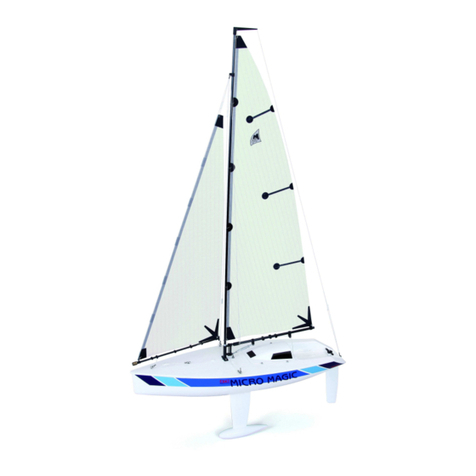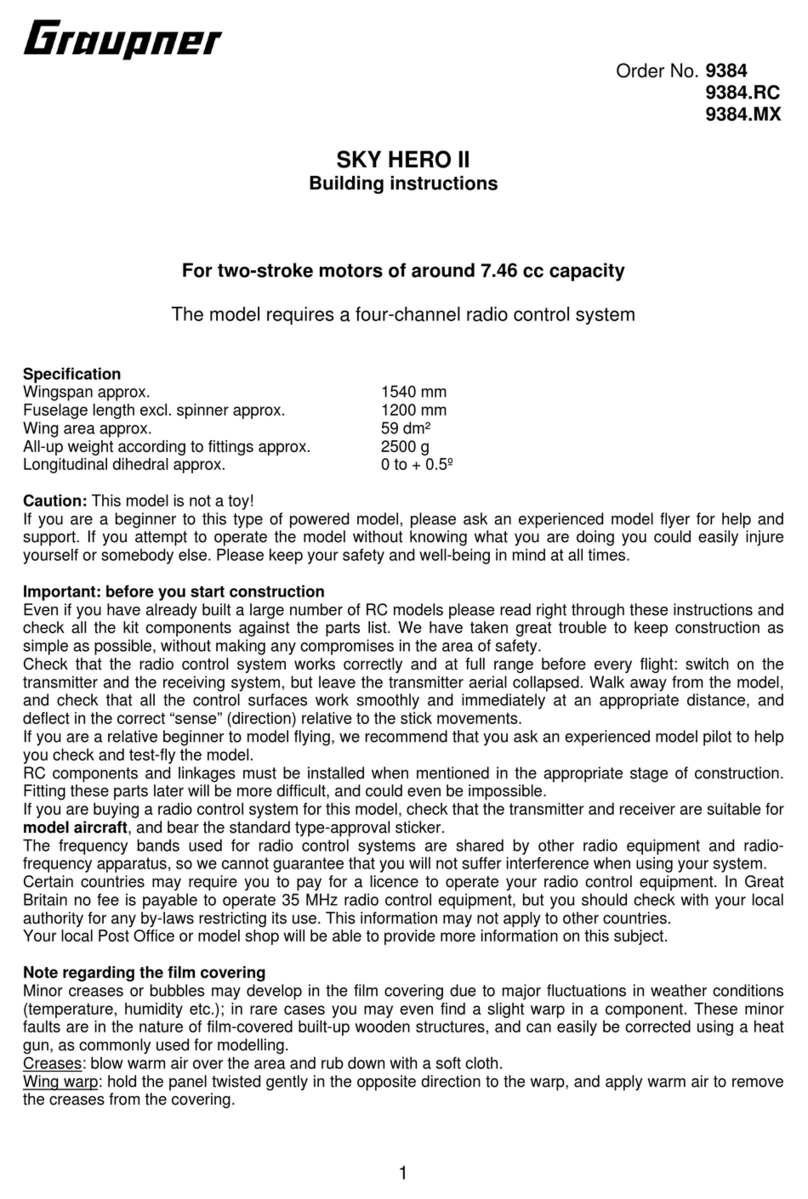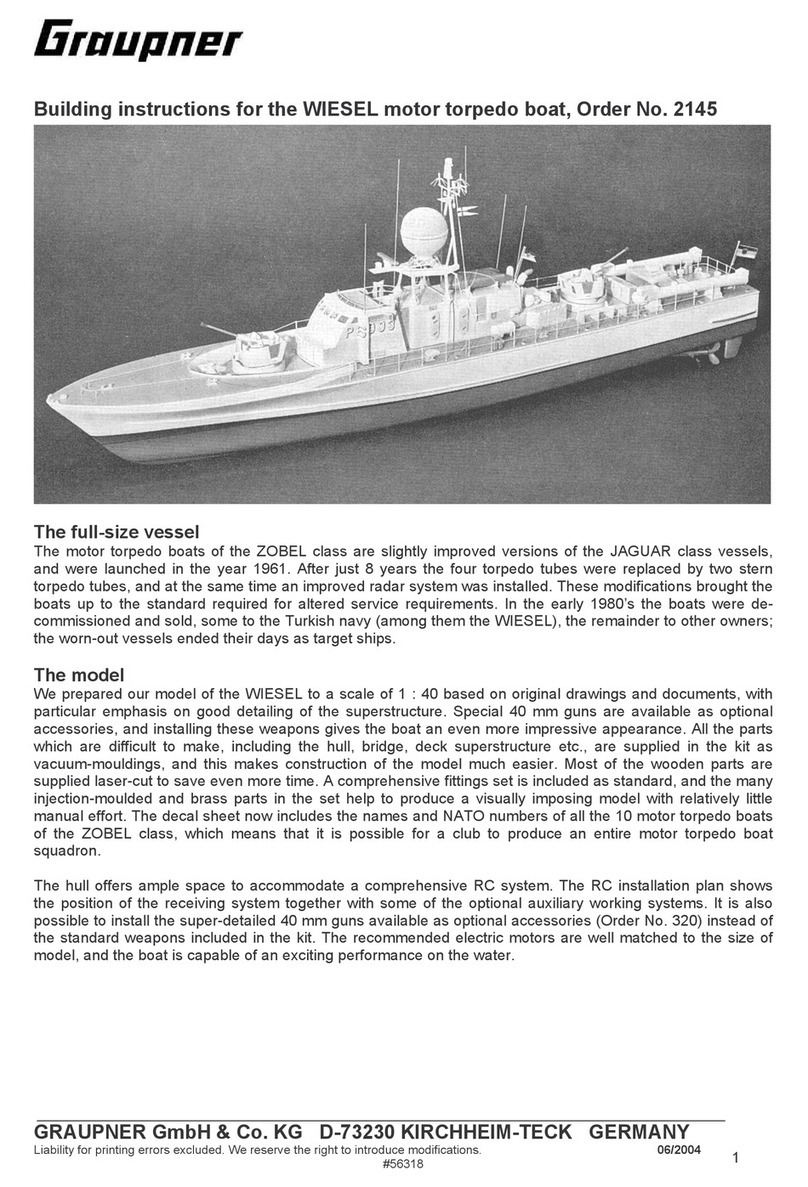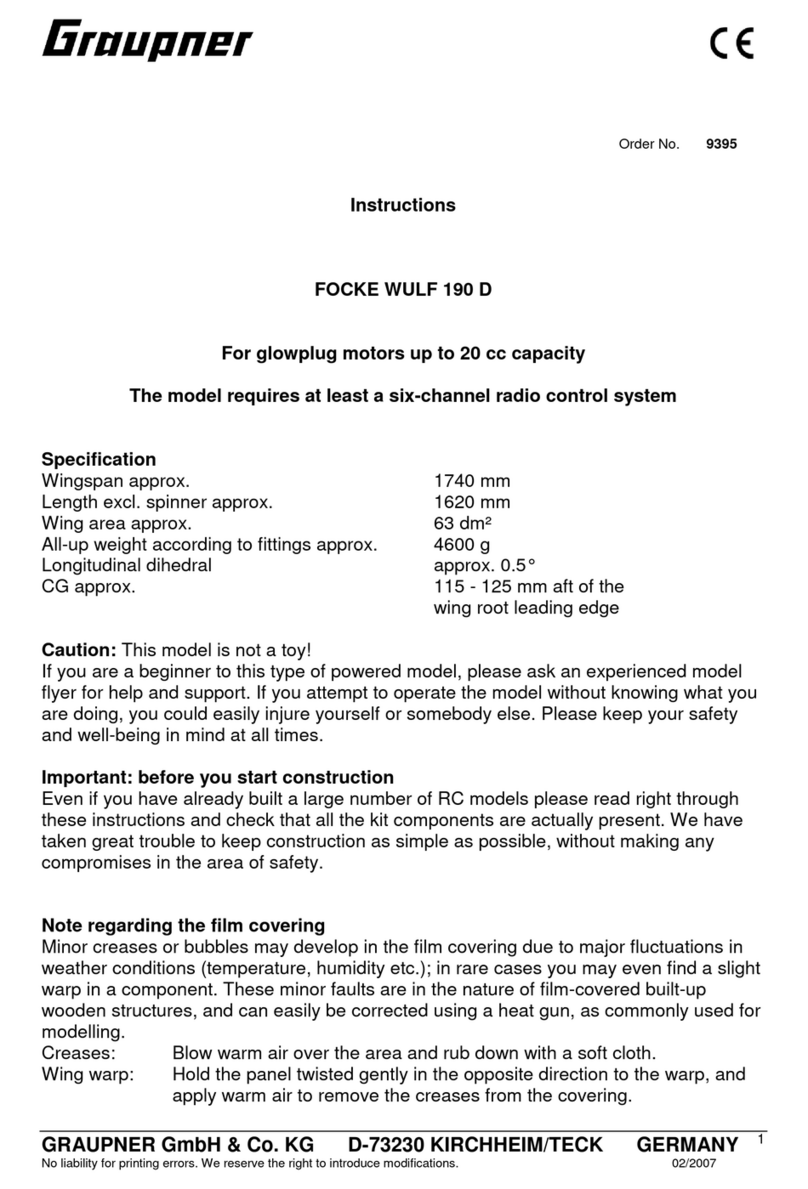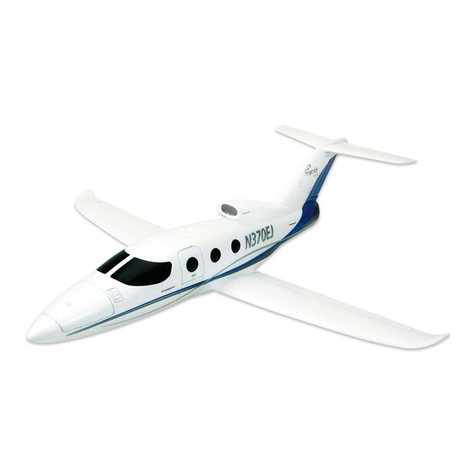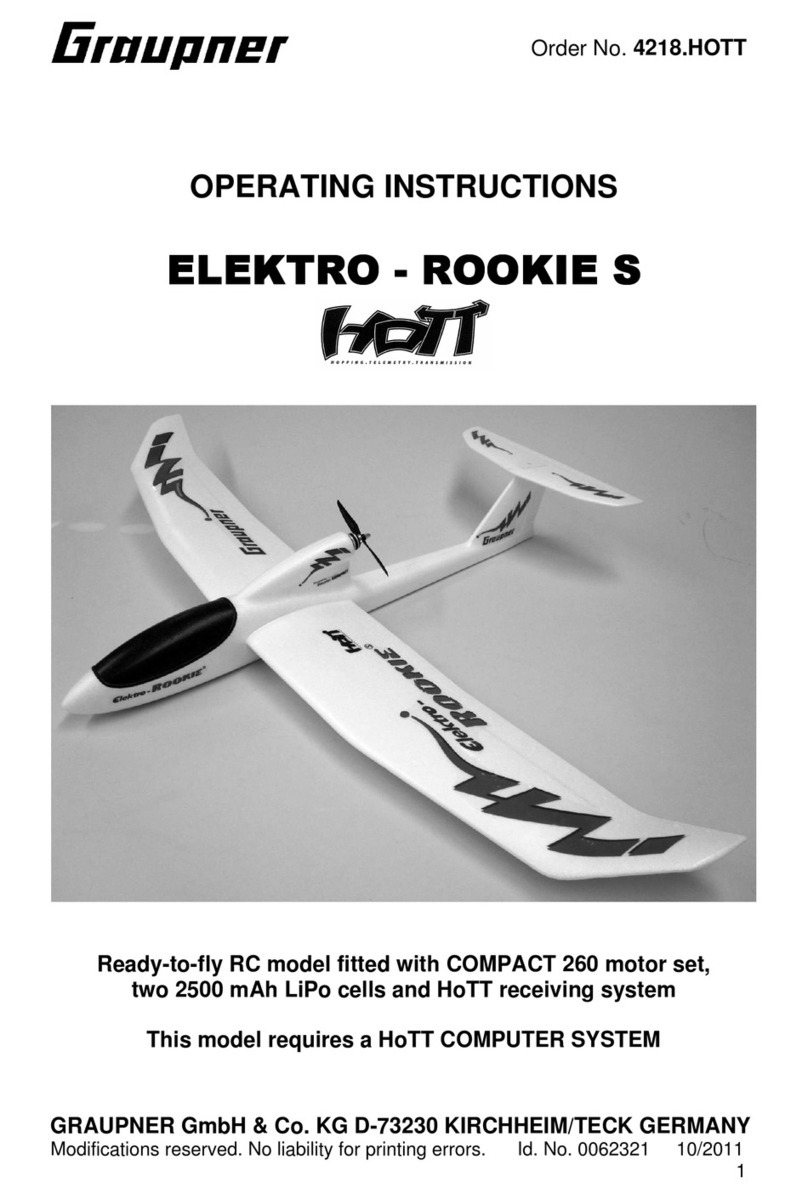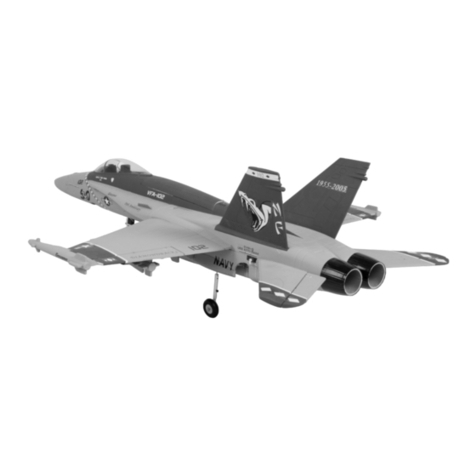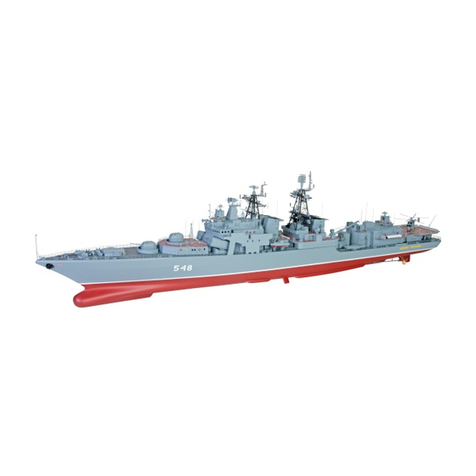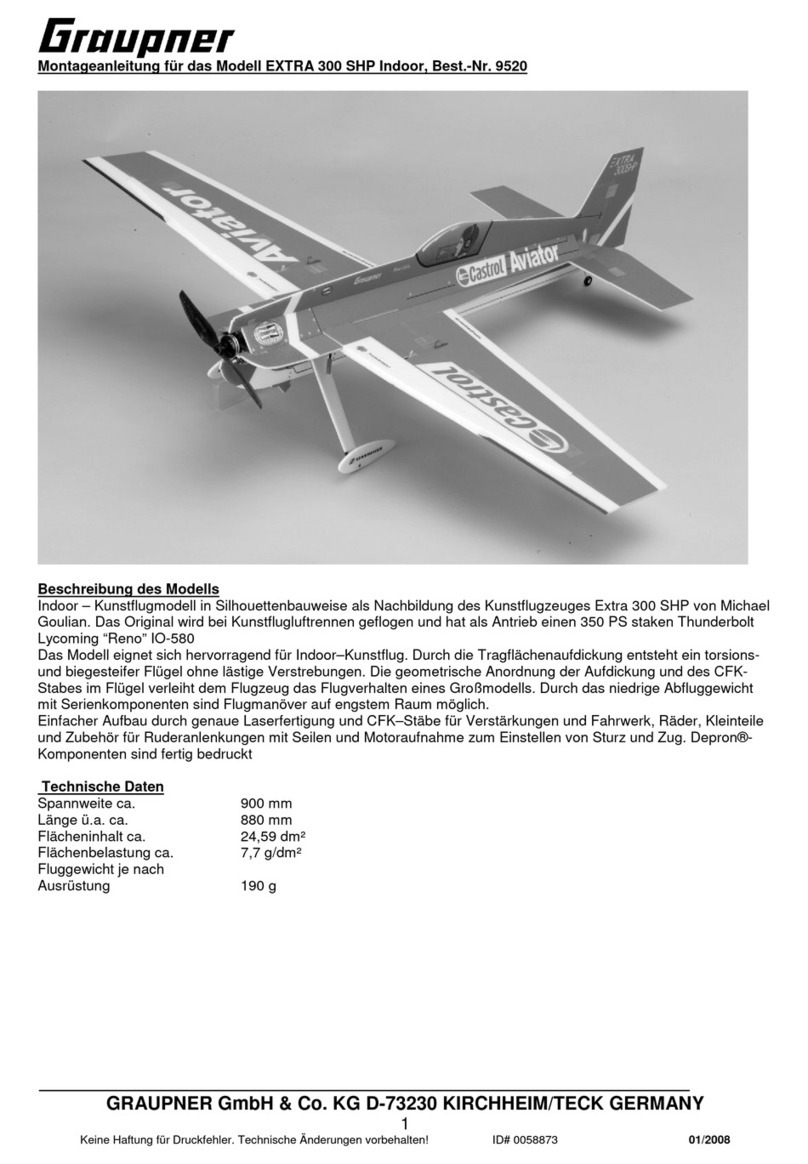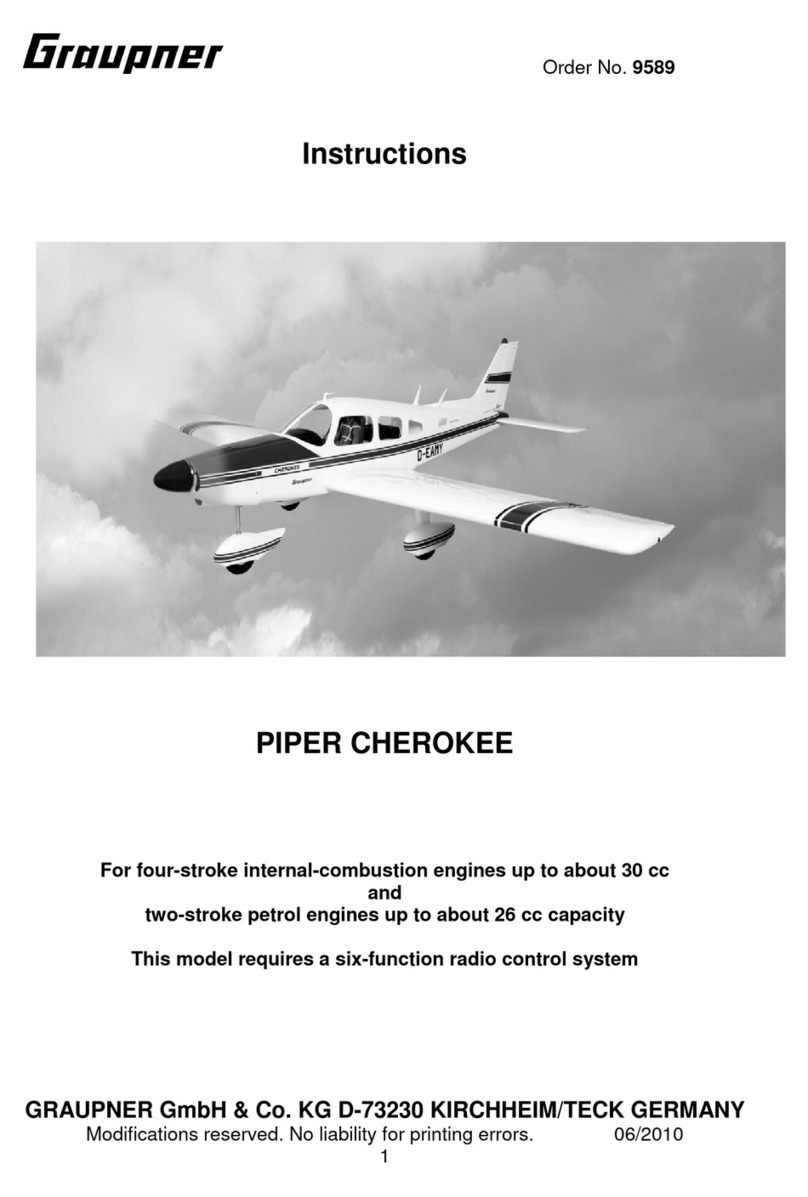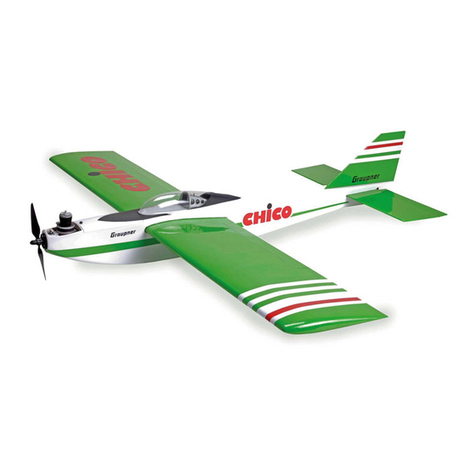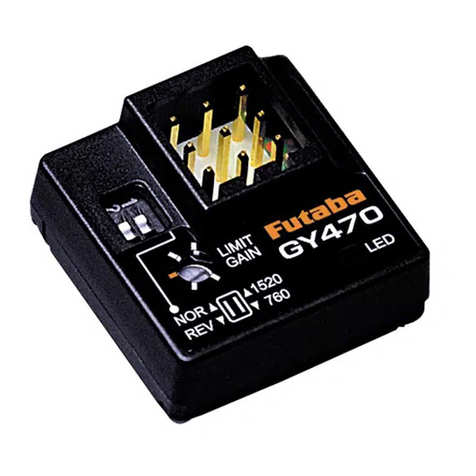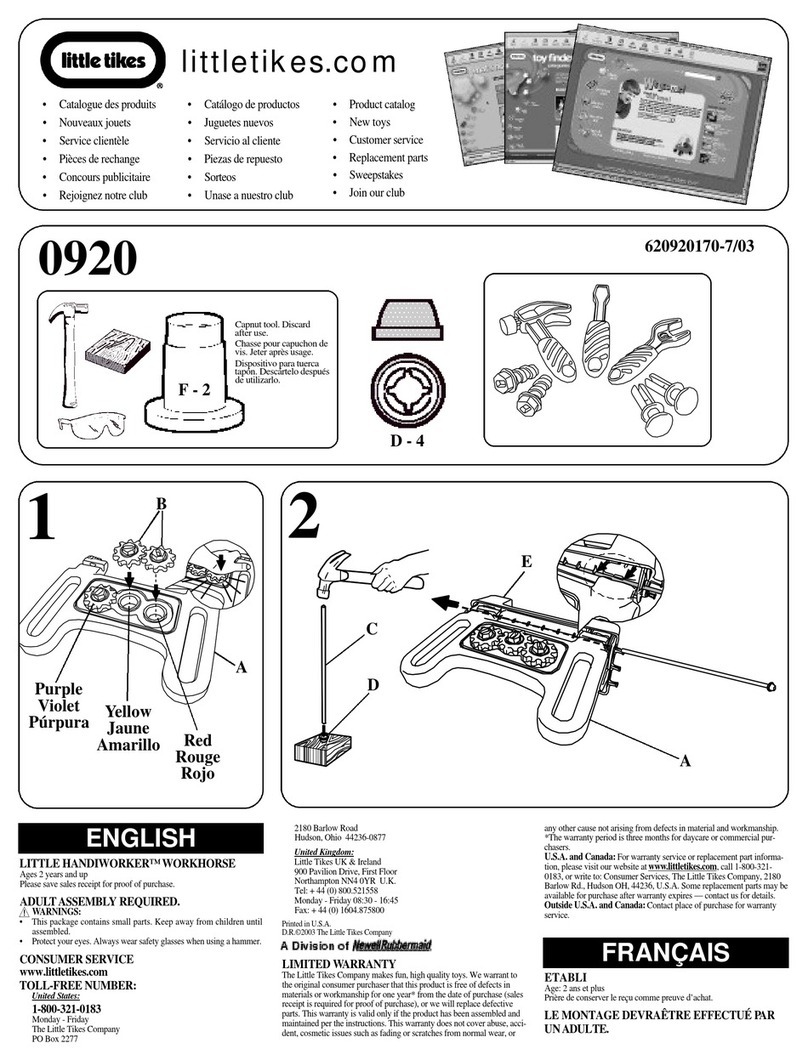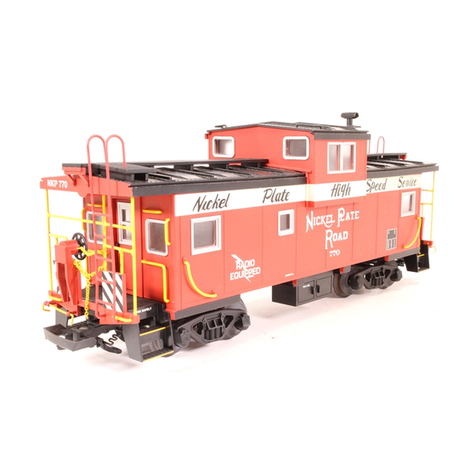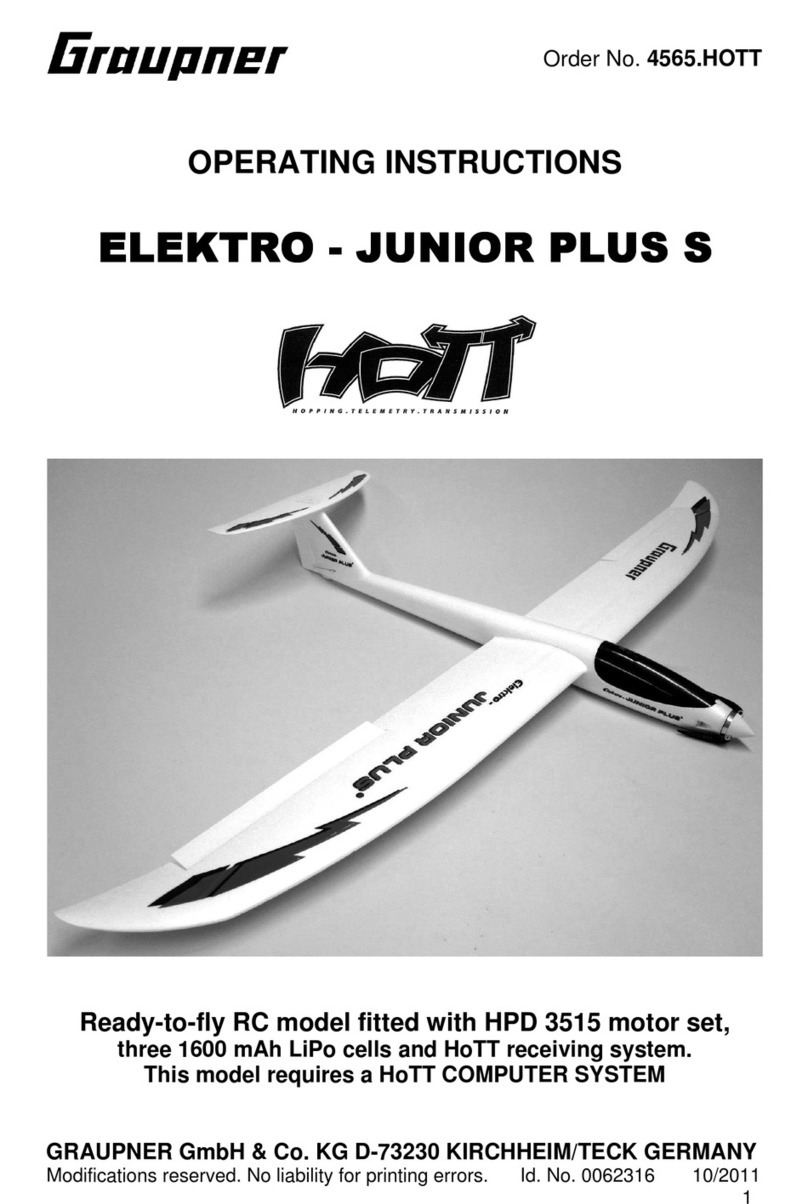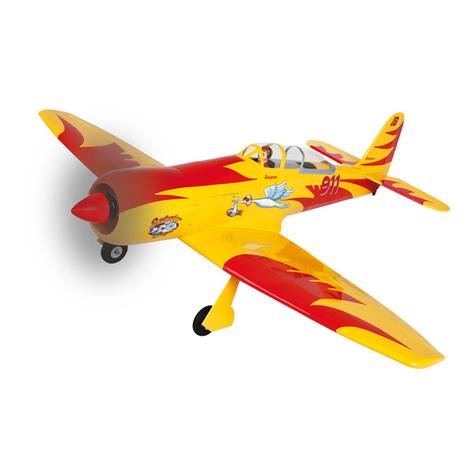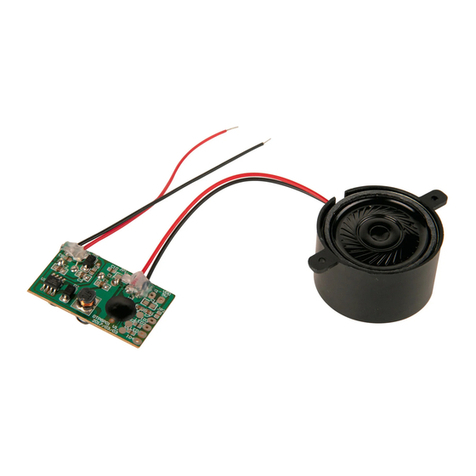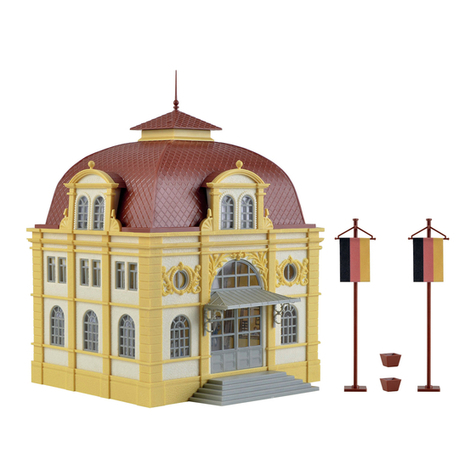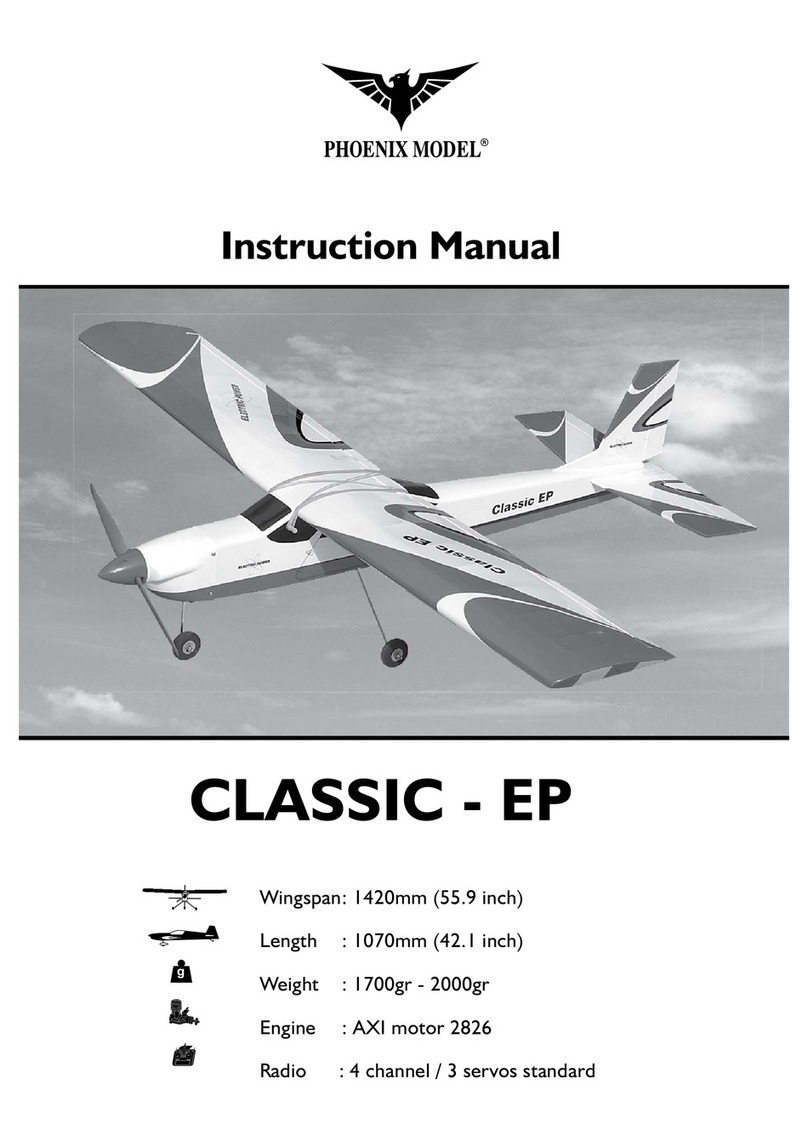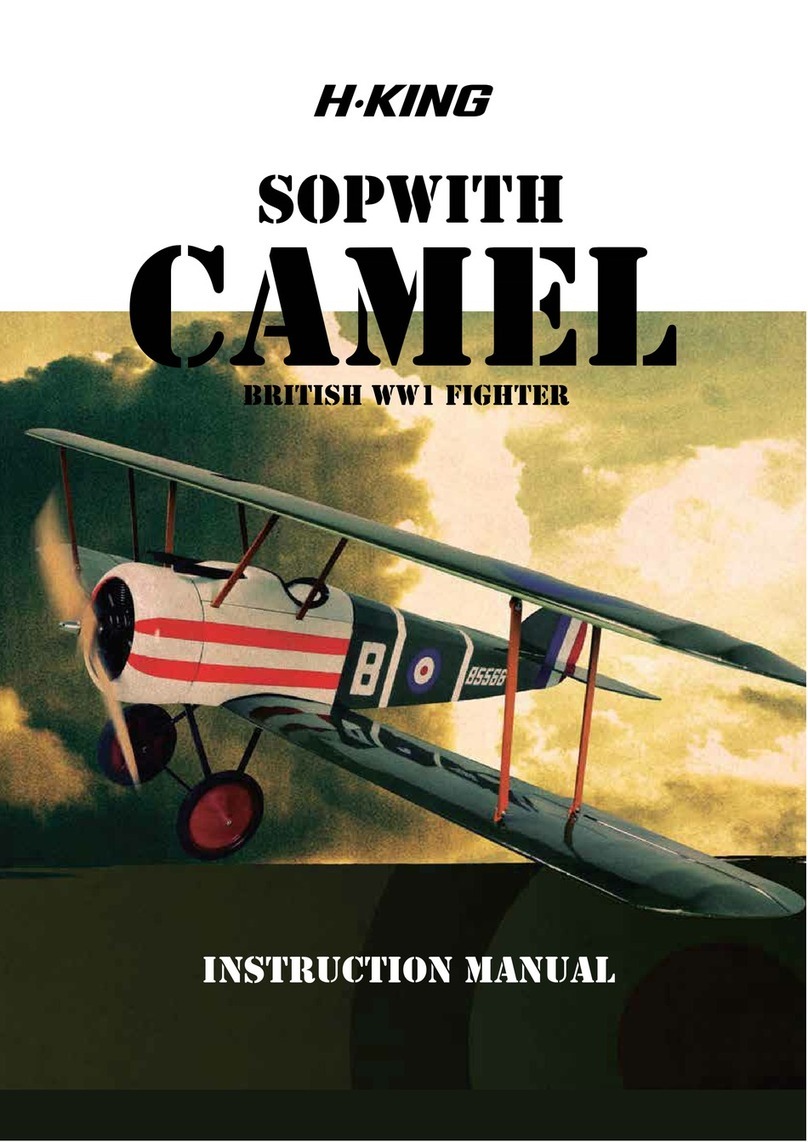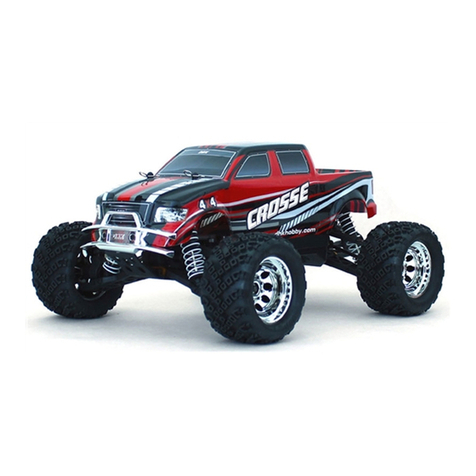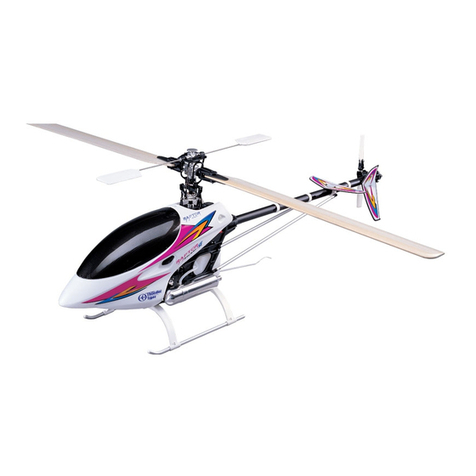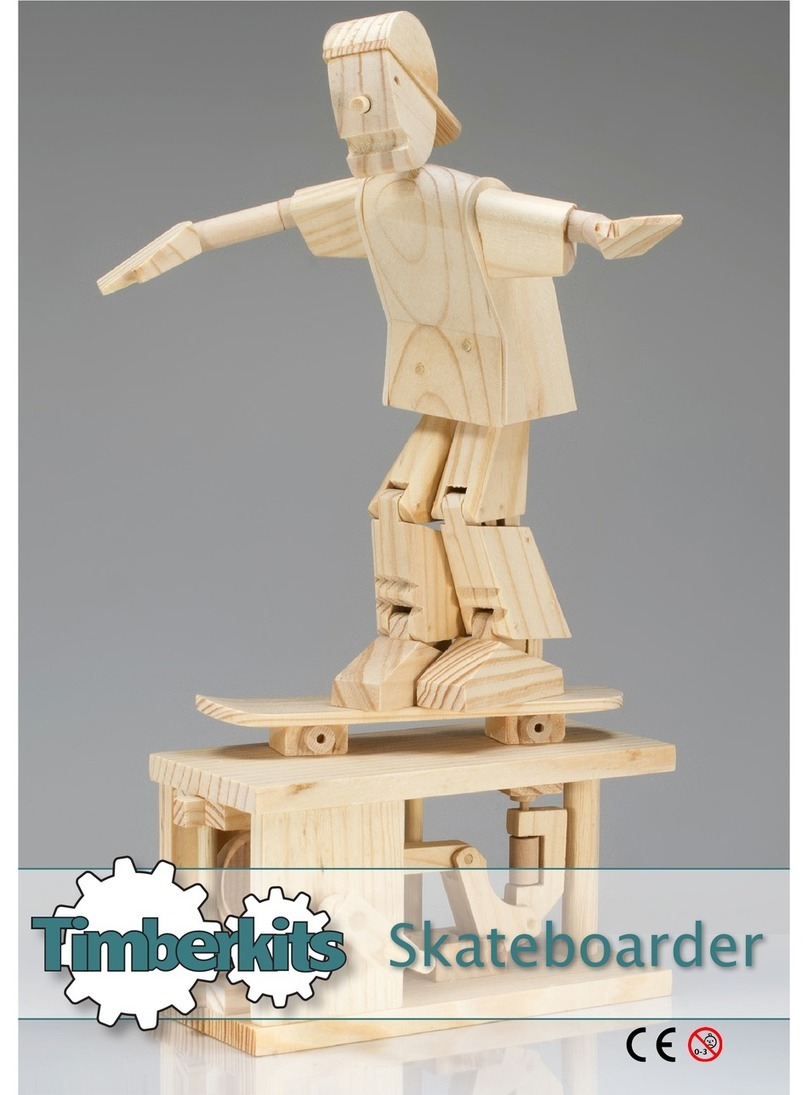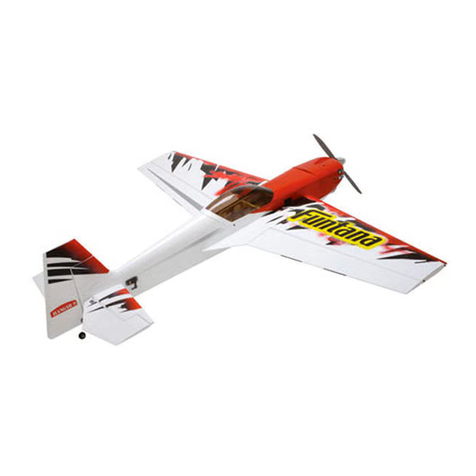GRAUPNER GmbH & Co. KG D-73230 KIRCHHEIM/TECK GERMANY
No liability for printing errors. Technical modifications reserved. 10/2010 #0062222
4
Setting up the VSPs
• Place the travel limiters in the transmitter stick wells. Please note: the limiters only
fit Graupner transmitters. The openings in the limiters do not correspond to the
stick units of other makes of transmitter.
• We recommend that you install the limiters permanently using thin double-sided
adhesive tape; they will not obstruct when you are operating other model boats.
• Charge up your transmitter and switch it on.
• Select an unoccupied memory on your transmitter.
• Select the Servo Settings menu at the transmitter, and reduce the end-points of all
the servos to about 30% to avoid damaging the servos during the next stage.
• We also recommend that you reduce the maximum speed of the speed controller
to about 50% or less, again by adjusting the servo travels at the transmitter; the
motors should only turn slowly while you are adjusting the system.
• Disconnect the motors from the power supply.
• Important: take care to avoid short-circuits; insulate any bare connectors.
• Connect the batteries to the battery link lead, Order No. 3031.
• Connect the speed controller’s battery connectors to the battery link lead.
• When adjusting the motors, leave the servos at the centre position to avoid
possible damage to them.
• Connect the motors to the speed controller and check that they rotate in the
correct direction.
• Directions as seen from the stern, looking forward:
• Right VSP: to the right (clockwise)
• Left VSP: to the left (anti-clockwise)
• Important: any attempt at setting up the VSPs in the bathtub or any similar con-
fined container will fail. Open water is required, otherwise water will flow between
the propeller blades, the hull and the “bank”, and cause confusing movements.
• To prevent the model drifting away during the adjustment procedure, secure it to
the bank or quay with a 1 - 2 m length of buoyant cord attached to the towing bar.
Ensure that the cord cannot become entangled in the propeller blades.
• Important: each VSP must be adjusted individually, i.e. without the other one
running.
• Set all the transmitter trim levers to centre.
• Connect one VSP to the speed controller.
• Select the Servo Settings menu at the transmitter, and adjust the centre position of
both servos until the boat floats motionless in the water.
• Caution: the two servos have a mutually inter-active effect on the steering and
running characteristics of the VELOX. For example, if you alter the centrepoint of
the forward / reverse servo, this will also have an effect on the rudder setting.
Keep the control lever close to its centre position, and the transmitter stick at the
Centre - 0 - position at all times during the adjustment procedure.
• It will take a little while to complete these adjustments, i.e. until the model is
motionless in the water. If you find you have to adjust the settings too far from the
centre point, it is best to adjust the threaded rods and start again.
• Watch the floating cord to check whether the boat is stationary or not.
• At this point you can adjust the travel end-points for both servos.
• This is accomplished by moving the associated stick to the upper / lower or right /
left end-point, and set values for servo travel at which the control lever does not
contact or foul the VSP’s guide sleeve.

